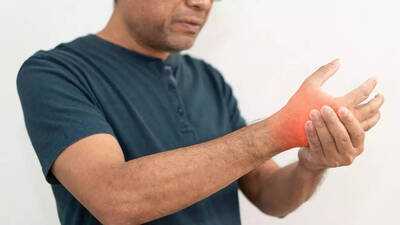
Guillain-Barré Syndrome or GBS, is one of those conditions that can appear without warning and turn a person’s life upside down in a matter of days. It’s a rare neurological disorder in which the body’s own immune system, usually a defender against illness, mistakenly begins to attack the peripheral nerves. These are the nerves that lie outside the brain and spinal cord, responsible for movement, touch, and pain sensations.
What begins as mild tingling in the feet or hands can quickly escalate into weakness and, in some cases, complete paralysis. Yet, despite its frightening nature, most people do recover fully with the right medical care and time.
How Guillain-Barré Syndrome develops
To understand GBS, it helps to picture the body’s nervous system as a complex network of wires. Each nerve is coated in a protective layer called myelin, which helps electrical signals travel smoothly. In Guillain-Barré Syndrome, the immune system mistakenly identifies this myelin as a threat and begins to strip it away.
As the nerves lose their insulation, communication between the brain and muscles becomes disrupted. This is why people with GBS suddenly find their muscles weakening or their reflexes fading. The attack usually starts in the legs and moves upwards, which is why early symptoms often begin with unsteady walking or difficulty climbing stairs.
Who can be affected with GBS
Although Guillain-Barré Syndrome can strike anyone, it most commonly affects adults between 30 and 50 years of age. Statistically, it remains extremely rare affecting roughly one in 78,000 people every year across the globe. But its impact can be life-changing, particularly if diagnosis or treatment is delayed.
Common symptoms of Guillain-Barré syndrome
The symptoms of Guillain-Barré syndrome (GBS) often begin subtly but can progress quickly. Many people first experience unusual sensations before the weakness spreads through their body.
Symptoms include:
- Tingling or pins-and-needles sensations in the feet and hands, often the first noticeable sign.
- Numbness or loss of sensation that gradually moves upward from the legs to the arms and face.
- Muscle weakness that can develop rapidly, sometimes within hours, usually affecting both sides of the body equally.
- Difficulty walking or climbing stairs due to loss of strength and coordination.
- Pain or cramping, particularly in the lower back, thighs, or legs, which can range from mild to severe.
- Problems with speech and swallowing, making it hard to talk clearly or eat comfortably.
- Shortness of breath if the chest muscles become weak, which may require urgent medical attention.
- Facial paralysis or difficulty moving the eyes, leading to vision changes or drooping facial muscles.
- Autonomic disturbances, where the nerves controlling vital functions such as heart rate, blood pressure, and digestion are affected. This may cause:
- Irregular or rapid heartbeat
- Fluctuating blood pressure
- Digestive issues or constipation
- Bladder control problems
In the most severe cases, GBS can cause near-total paralysis, leaving the patient fully conscious but unable to move. These complications are rare but potentially life-threatening, which is why most people with GBS are closely monitored in hospital intensive care units during the acute phase of the illness.
What causes Guillain-Barré Syndrome
Doctors have long observed that Guillain-Barré Syndrome often appears after an infection. Around two-thirds of patients recall having a cold, flu, or stomach infection in the weeks leading up to their symptoms. The most common culprit is a bacterium called Campylobacter jejuni, often linked to food poisoning.
In rare cases, viral infections such as influenza, cytomegalovirus, Epstein-Barr virus, or Zika virus have been known to precede the condition. Occasionally, GBS has been reported after surgery or vaccination, but such instances are extremely rare. The precise reason why only some people develop GBS after an illness remains unclear. It seems to depend on how an individual’s immune system reacts to an unfortunate case of mistaken identity, where the body confuses healthy nerve tissue for a harmful invader.
How Guillain-Barré Syndrome is diagnosed
Diagnosing GBS involves piecing together a patient’s medical history, symptoms, and clinical test results. Doctors usually start by asking when the weakness began, whether it’s been getting worse, and if there were any recent infections.
A physical examination often reveals weak or absent reflexes, which is a strong clue. However, because other neurological conditions can mimic GBS, further tests are needed for confirmation.
One of these is a lumbar puncture, or spinal tap, which involves collecting a small sample of cerebrospinal fluid from the lower back. In people with GBS, this fluid usually contains more protein than normal but few white blood cells.
Nerve conduction studies and electromyography (EMG) are also useful, as they measure how well the nerves and muscles communicate. An MRI scan of the spine may be ordered to rule out other causes of paralysis or weakness.
What to expect after Guillain-Barré Syndrome
The recovery process varies widely from one person to another. Some begin to improve within a few weeks, while others take months or even a year to regain full function. Most people recover well, but around a third may continue to experience some weakness or fatigue long after the initial illness has passed.
Despite its severity, Guillain-Barré Syndrome rarely leads to death. Fewer than two in a hundred patients die during the acute phase, usually from complications such as pneumonia, sepsis, or cardiac arrest. Once recovery begins, life expectancy returns to normal.
Can Guillain-Barré Syndrome be prevented
The precise cause of GBS is still unknown, there’s no guaranteed way to prevent it. However, maintaining good hygiene and overall health can lower the risk of infections that might trigger the syndrome.
Simple steps such as frequent handwashing, eating well, exercising regularly, and keeping vaccinations up to date can make a difference. Avoiding close contact with people who have contagious infections and disinfecting common household surfaces also helps to minimise exposure.
Also Read |
-
CEED 2026 registrations underway at ceed.iitb.ac.in; apply till October 31

-
EDF urges easy fix that could save you roughly '£60 a year' on energy bills

-
Delhi pollution: AAP vilifying Diwali to appease vote bank, says minister Sirsa

-
MAPPED: The 68 Pizza Hut restaurants to close in the UK - 1 major region losing 7 out of 9

-
Kathiawadi Masala Khichdi: This delicious dish will delight everyone, and it's also easy to digest..